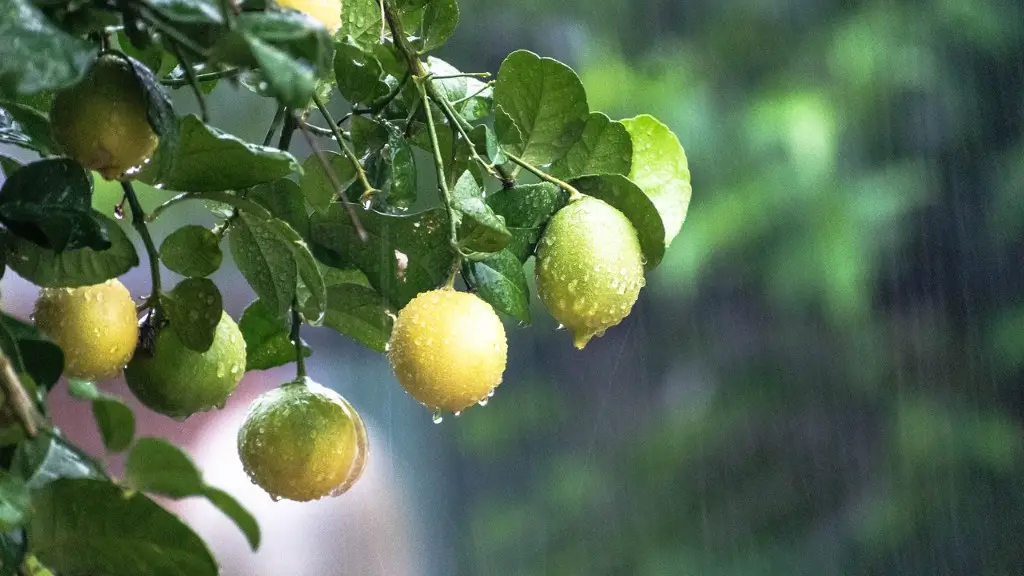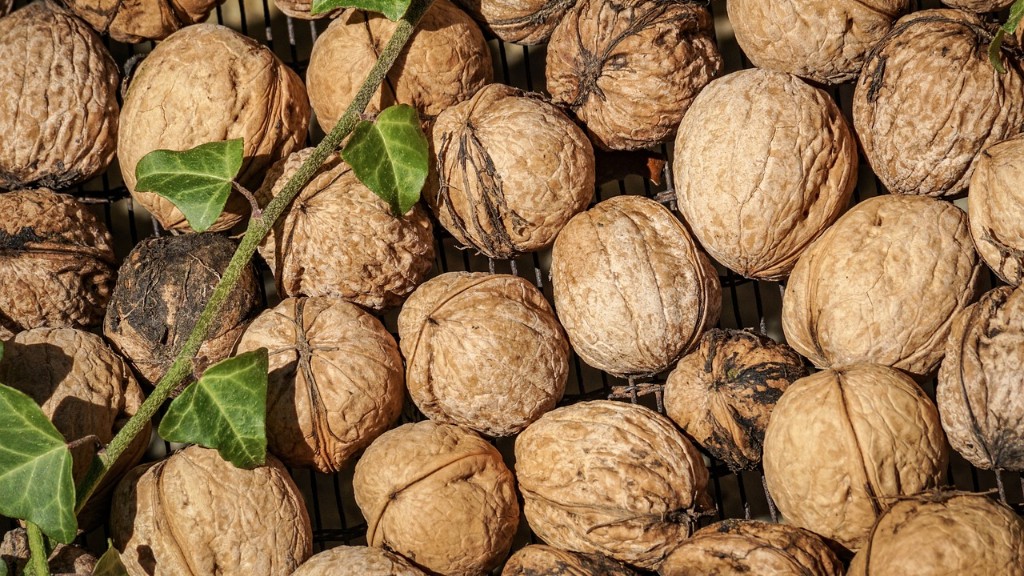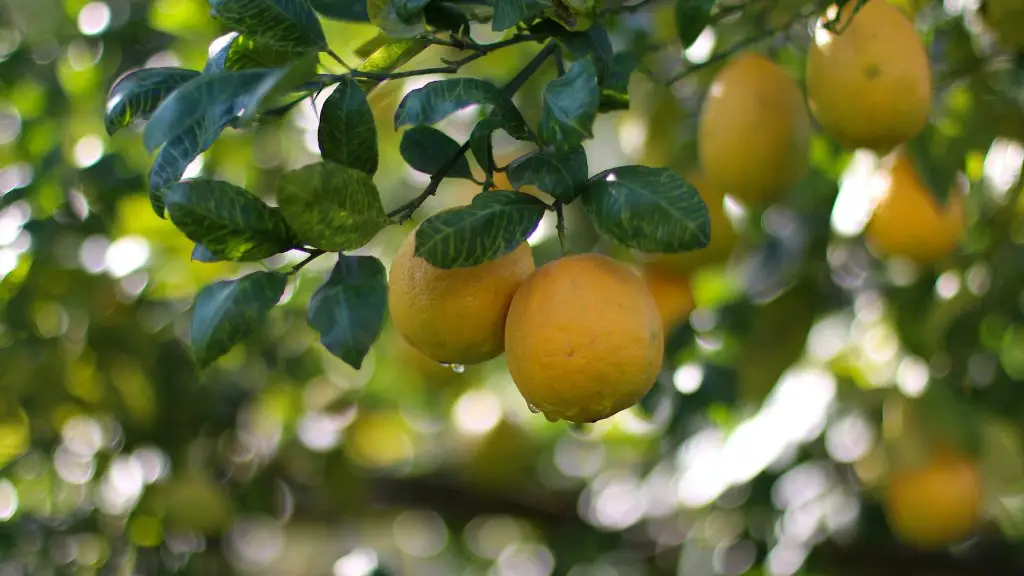Growing a lemon tree indoors is a great way to bring a tropical fruit harvest into your home. It’s not difficult provide you know the basics and set yourself up for success. Here’s what you need to know to get started.
First, you’ll need to find a suitable lemon tree variety. Meyer lemons and Ponderosa lemon trees are ideal for growing indoors and typically reach six to eight feet in height. To maximize light exposure and reduce pests, you’ll want to select a dwarf variety. Make sure to look for a lemon tree that specifically states it’s suitable for indoor purposes.
Next, you’ll need to find a container that’s large enough to accommodate plenty of soil and your lemon tree’s roots. A pot that’s 12” in diameter is ideal but again, you’ll want to make sure it’s suitable for indoor growing. Your pot should feature drainage holes and you’ll also need to select a well-draining soil and fertilizer.
Now it’s time to position the tree in a sunny spot! Place your pot within four to five feet of light from a south- or east-facing window, making sure it gets at least six hours of sun each day. Daily rotations along the window to ensure all sides get light are also recommended.
Be sure to water your lemon tree often enough that the soil stays evenly moist and think about misting the new leaves for extra humidity. The frequency of watering will depend on your climate and the size of your pot.
Then, it’s time to fertilize! Apply a slow-release, citrus fertilizer when you first plant your tree, and then every few months. Finally, hand-pick pests off your lemon tree to avoid any damage, or you can use an insect repellent made out of garlic oil, chilli powder and water.
You’ll also need to prune your tree every six months, removing any dead branches, branches that cross over other branches, and fruiting branches that hang low to the ground. If you prune regularly, your lemon tree should have a full, bushy canopy and plenty of fruit.
Advice for Green Thumbs
If you’ve got a green thumb, there are some further measures you can take to nurture your lemon tree indoors. For example, you can use a grow light to supplement your tree’s exposure to sunlight during the winter months. You can also add a humidifier in dry climates and make sure your tree is getting plenty of airflow.
You should also think about potential pests. If you’re growing your lemon tree indoors in an enclosed space, rethink having other plants nearby. It’s also worth investing in some biodegradable natural insect repellent so you can keep the bugs away without endangering your fruit.
Finally, make sure you’re patient. It can take months before you’ll see the first fruit on your lemon tree. Just try to enjoy the moment, and eventually your patience will be rewarded!
Preparing the Lemon Tree for Harvesting
When harvesting your fruit, you’ll want to use a sharp knife or pruners to cleanly snip each lemon from the stem. Once you’ve got your fruit, give it a few days before you eat it; the lemon may seem unripe due to the cool indoor climate.
Finally, consider how you can use your lemons! Freshly squeezed lemon juice is great for flavoring salads and adding a delicious zing to your dishes. Citrus zest can also be used for baking or added to yogurt or smoothies. Or you can make a simple lemon cordial from sugar and lemons! The possibilities are endless.
Growing Techniques for Optimal Results
If you want to ensure your lemon tree produces the best tasting fruit, there are some other growing techniques to consider, such as increasing the humidity in the air and adjusting the soil’s pH levels. You can also ensure the tree isn’t drinking water too quickly by adding mulch to the topsoil during the dry season.
It’s also important to remember to keep up with regular pruning and rotate the tree frequently so that the light is evenly distributed. Finally, make sure you’re checking for insects and fertilizing on a regular basis so you don’t end up with an unproductive, unhealthy lemon tree.
Harvesting and Storage
When your lemon tree is ready to harvest, use a sharp knife or pruners to cut off each lemon cleanly. After that, don’t wash your lemons until you’re ready to eat them or use them in recipes, as washing them beforehand can reduce their shelf-life. Lemons should keep in the refrigerator for at least two weeks, but they can often last longer.
You should also think about preserving your lemons for later use. Lemons can be frozen, canned or preserved with salt or olive oil for later use. Canned lemons are a great way of having a supply of home-grown lemons all year round. You can also dry them for use in other recipes.
Caring for an Indoor Lemon Tree
Just like other plants, your lemon tree will require different levels of care depending on the season and the age of the plant. During the warmer months, you’ll want to make sure the soil is moist, the tree is getting plenty of sunlight, and water is draining properly.
In the winter, remember to keep the pot away from any cold drafts and watch out for pests. Additionally, you’ll want to fertilize once a month to protect the roots and ensure the lemon tree produces a good yield of fruit.
Finally, it’s essential to remember that your lemon tree won’t produce overnight – it requires time, nurturing, and patience. With the right conditions and the right care, you’ll soon have a flourishing lemon tree and a bounty of delicious lemons!




